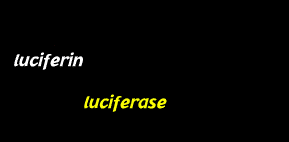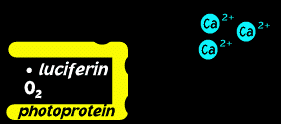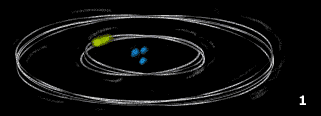![]()
|
Bioluminescence is light produced by a chemical reaction within an organism. At least two chemicals are required. The one which produces the light is generically called a "luciferin" and the one that drives or catalyzes the reaction is called a "luciferase." |
 |
The basic reaction follows the sequence illustrated above:
Sometimes the luciferin and catalyzing protein (the equivalent of a luciferase), as well as a co-factor such as oxygen, are bound together to form a single unit called a "photoprotein." This molecule can be triggered to produce light when a particular type of ion is added to the system (frequently calcium). |

|
|
Bioluminescence is not the same as "fluorescence" or "phosphorescence". (See Myths for more explanation.) In fluorescence, energy from a source of light is absorbed and reëmitted as another photon. In bioluminescence or chemiluminescence the excitation energy is supplied by a chemical reaction rather than from a source of light. |
| Here is a simplified view of fluorescence:
|
Note that due to energy loss while in the excited state, the photon emitted will always be longer wavelength (lower energy) than the exciting photon. See the Myths section for a little more explanation.
|
|
|
[Download printable PDF version of this page]
 . | Return to the Bioluminescence Info Page.
. | Return to the Bioluminescence Info Page.
